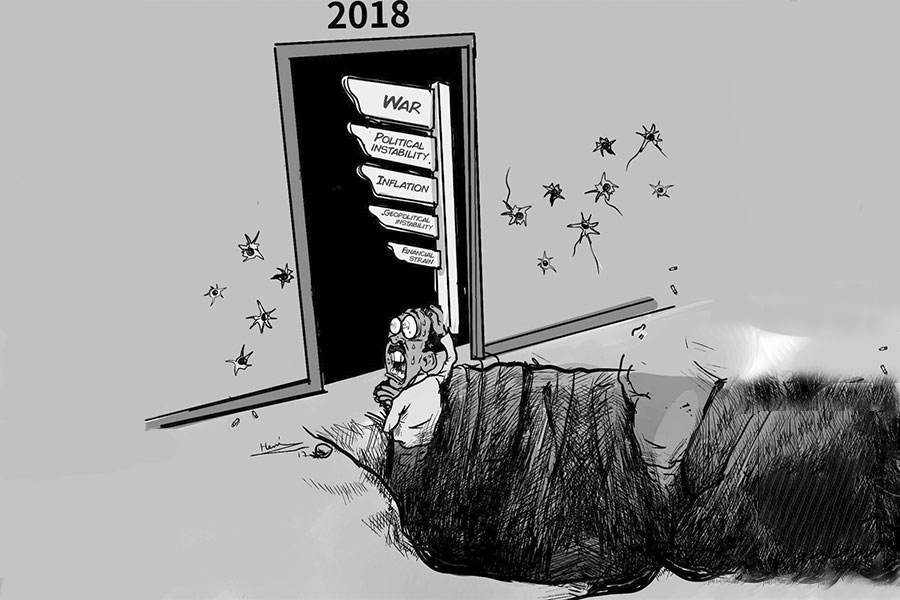
Photo Gallery | 157306 Views | May 06,2019
Sep 7 , 2025. By NAHOM AYELE ( FORTUNE STAFF WRITER )
While city officials celebrated the return of the public auction as a sign of transparency and progress, the fierce competition and plunging prices tell a more complicated story. The market’s appetite for land remains strong, but the city’s ability to balance developers' interest with equitable urban growth is far from assured. The auction, intended as a reset for Addis Abeba’s real estate market, may have simply underlined the urgency of deeper reforms.
Addis Abeba’s sixth public land lease auctions after a five-year pause delivered mixed signals for the capital’s volatile real estate market. While the highest land price plunged nearly 58pc from its previous peak, tumbling from 218,000 Br to 91,330 Br a square metre, the intensity of the bidding war revealed persistent demand pressures.
City officials put 132 plots on the market, spread over seven districts and totalling more than 42,663Sqm, about the size of six football fields. Interest was strong, with over 5,200 people buying bid documents, and more than 3,500 submitted formal offers.
The highest bid was made by Yisalem Manaye, who offered 91,330 Br a square meter for a 90Sqm plot in the Nifas Silk Lafto District. The bid, setting the ceiling for the latest round, was a sharp drop from the previous record of 218,000 Br a square meter. Yisalem’s total commitment, over 8.2 million Br for a plot barely large enough for a modest home, left many market watchers taken aback.
However, the lower ceiling did not translate into a lack of excitement. Nifas Silk Lafto District, which supplied 56 plots and saw more than 1,600 bids, emerged as the auction’s busiest location. The District saw a string of high offers. Hassen Abdulwehab and Getinet Chane bid 90,100 Br for a square metre for separate plots in the District. Corporate interest was also strong as Biruh Cooperative Contractor Plc snapped up a plot at 42,027 Br a square metre.
Investment levels spanned a wide range. At one end was the smallest successful bid of the round: 12,550 Br a square meter for a 281Sqm plot in Yeka District, totalling about 3.5 million Br. At the other end, MayWish Enterprise S.C. acquired a 1,349Sqm parcel for 41,000 Br a square metre, an outlay exceeding 55 million Br.
Kibrom Assefa, chairman of the Land Auction Committee, described the process as transparent and largely successful.
“Many winners opted to pay the full amount upfront,” he told Fortune, calling it a policy the city administration adopted to discourage speculators and attract committed developers.
He disclosed that all plots had undergone redevelopment, with compensation already paid to former holders, and all were zoned for mixed residential and commercial use.
Nonetheless, not everything went smoothly. One plot in Nifas Silk Lafto was withdrawn from the auction due to ongoing legal disputes. Nearly 723 bid documents were disqualified for not meeting requirements.
Despite the official optimism, experts see flaws in the system. According to Habtamu Sitotaw, a legal expert at Bahir Dar University’s City Land Administration Institute, the leasehold system is pushing prices to unsustainable levels and encouraging speculation.
“Developers view these plots as commercial assets,” he said. "Large upfront payments are made in the expectation of long-term gains."
Habtamu argued intermediaries and developers with little intention to build often end up controlling land, fueling price increases and putting ownership out of reach for most ordinary residents. The gap between compensation paid to displaced residents and the city’s lease revenues, he said, is only growing.
“The government’s urban policy seems to be pushing low-income communities out of central areas while offering inner-city land to the wealthy through expensive leases,” he said.
Habtamu also argued that a lack of follow-up by authorities has allowed many winners to leave land idle, delaying development and affecting the city’s revenue. He urged officials to regulate prices, enforce land-use plans, and reform policies to make access more equitable. Without these steps, he cautioned, “Addis Abeba’s land lease system risks widening the gap between the city’s rich and poor, undermining the very foundation of sustainable urban development.”
PUBLISHED ON
Sep 07,2025 [ VOL
26 , NO
1323]

Photo Gallery | 157306 Views | May 06,2019

Photo Gallery | 147592 Views | Apr 26,2019

Photo Gallery | 136188 Views | Oct 06,2021

My Opinion | 135305 Views | Aug 14,2021

Sep 13 , 2025
At its launch in Nairobi two years ago, the Africa Climate Summit was billed as the f...

Sep 6 , 2025
The dawn of a new year is more than a simple turning of the calendar. It is a moment...

Aug 30 , 2025
For Germans, Otto von Bismarck is first remembered as the architect of a unified nati...

Aug 23 , 2025
Banks have a new obsession. After decades chasing deposits and, more recently, digita...